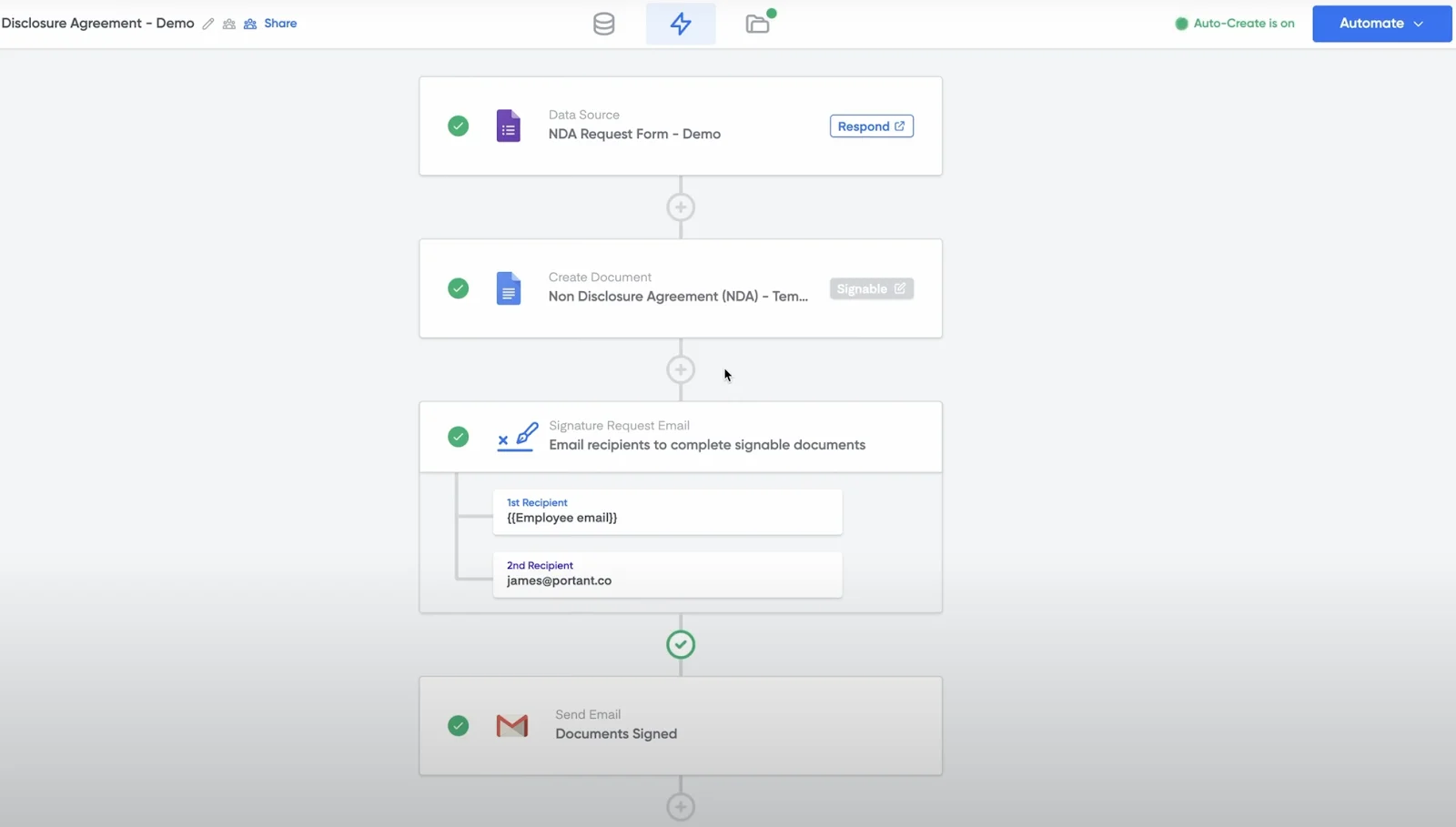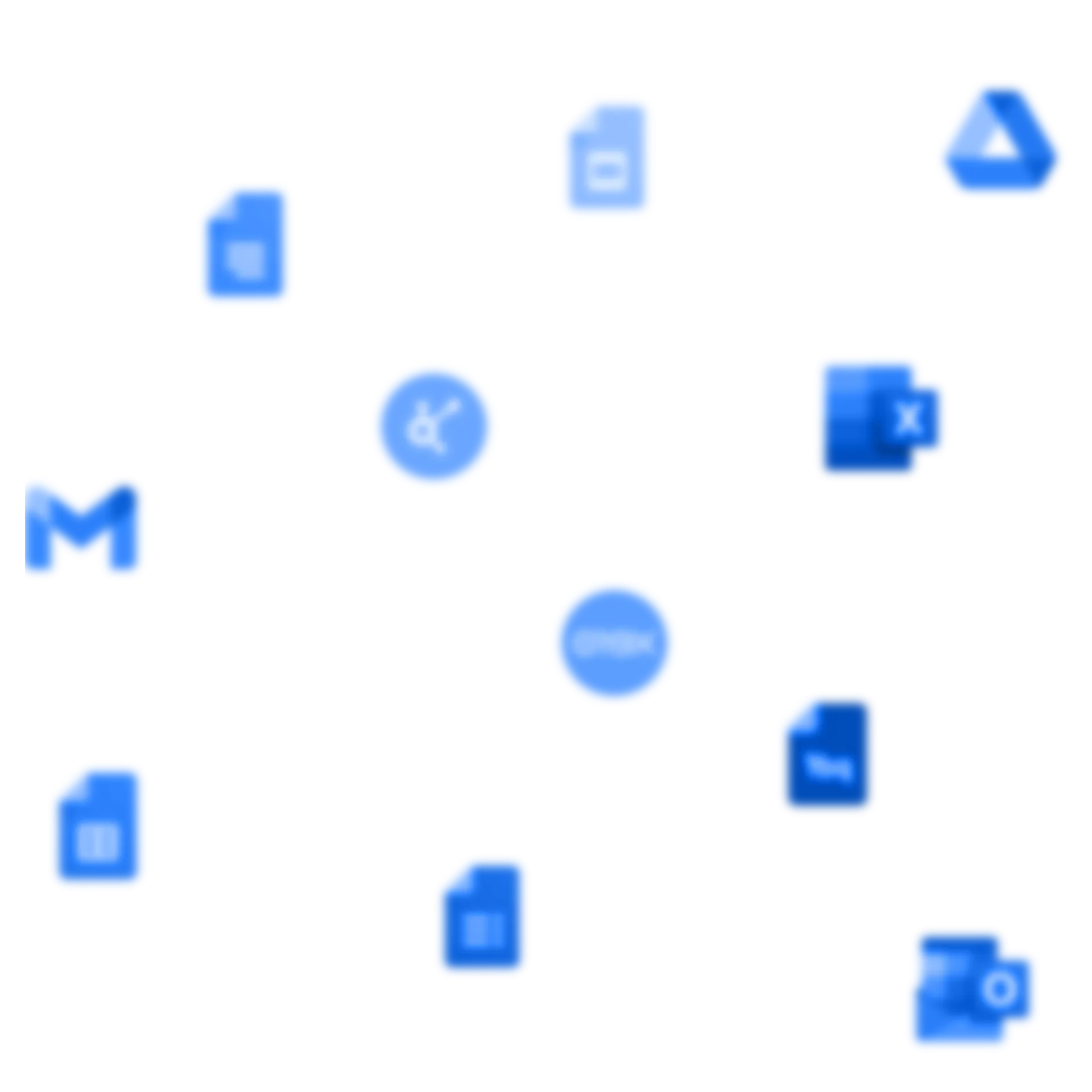
In business, contracts serve as the backbone of numerous agreements and partnerships. From sales agreements and vendor partnerships to employment contracts and service-level agreements, these legally binding documents underpin many business relationships.
Efficiently managing these contracts throughout their lifecycle is important for organizations of all sizes.
In this article, we will dive into the details of CLM, dissecting its seven key stages and exploring how CLM automation solutions revolutionize contract management.
What is Contract Lifecycle Management (CLM)?

Contract Lifecycle Management (CLM) is a systematic approach to overseeing the entire lifespan of a contract, from its inception and creation to its eventual renewal or expiration.
CLM aims to systematize and optimize the management of contracts, using specialized contract management workflow to enhance efficiency, reduce risks, and bolster business outcomes.
Contract Lifecycle Management Process vs. Manual Contract Management
Before we dive into CLM, let's distinguish between Contract Lifecycle Management and traditional manual contract management.
Advantages of CLM:
- Efficiency: CLM software automates many labor-intensive tasks, such as contract creation, tracking key contract dates, and managing contract workflows. This significantly reduces the time and effort required to manage contracts.
- Visibility: CLM systems provide real-time visibility into the status of all your contracts, ensuring that nothing falls through the cracks. This transparency is essential for making informed decisions and mitigating risks.
- Compliance: CLM solutions often incorporate contract compliance features, ensuring that contracts adhere to legal and regulatory requirements.
- Cost Savings: By reducing manual errors, preventing missed deadlines, and streamlining negotiation processes, CLM can lead to substantial cost savings.
Disadvantages of CLM:
- Implementation Costs: Setting up and customizing CLM software can be expensive initially.
- Learning Curve: Staff may require training to maximize the benefits of CLM software.
- Overreliance on Technology: Over-dependence on CLM software without proper oversight can lead to errors or missed opportunities.
Advantages of Manual Contract Management:
- Low Initial Cost: Manual contract management does not demand substantial upfront investments in software or training.
- Flexibility: Manual processes can be tailored to specific needs and adapt to changes in the business environment.
Disadvantages of Manual Contract Management:
- Inefficiency: Manual processes are often time-consuming, prone to errors, and lack real-time tracking capabilities.
- Risk Exposure: Manual processes are more susceptible to legal and regulatory compliance issues without automated compliance checks and alerts.
- Limited Visibility: Gaining a comprehensive view of contracts and their status can be challenging with manual management.
The Process Breakdown of Contract Lifecycle Management
At its core, Contract Lifecycle Management seeks to bring order to contract creation, negotiation, approval, execution, monitoring, renewal, and eventual expiration.
This complex process involves multiple stakeholders, legal considerations, and regulatory compliance.
With this context in mind, let's explore the seven key stages of Contract Lifecycle Management in more detail.
7 Stages of Contract Lifecycle Management
1. Requesting and Drafting of the Contract
The journey of Contract Lifecycle Management commences with the inception of a contract. At this initial stage, parties outline the scope of their agreement and begin crafting the legal document that will govern their relationship.
While some organizations create contracts from scratch, others leverage pre-drafted contract templates to expedite the process. Portant provides a free-to-use contract template to serve as the foundation for your contract management process.

The template is created to save valuable time and resources that otherwise would be spent on crafting a contract from scratch.
However, it's essential to emphasize that while this template offers a solid starting point, legal teams should always review and adjust them based on specific agreement details to ensure legal compliance.
2. Reviewing and Negotiating the Contract
Once a contract draft is in place, it proceeds to the critical review and negotiation phase. This stage entails multiple discussions between involved parties and their legal representatives. The objective is to refine contract terms and conditions to align with the interests and expectations of all parties while adhering to legal requirements.
Efficient contract review and negotiation are paramount for preventing future disputes and misunderstandings.
With Portant’s contract workflow, you can connect your professional email and send your contract to all the parties involved for review, thus enhancing collaboration, tracking changes, and ensuring all stakeholders are on the same page.
3. Approving and Signing the Contract
After reaching a consensus on contract terms, the document advances to the approval and signing stage. In the current digital era, traditional manual signatures have given way to innovative solutions like Portant's electronic signature functionality.
Portant simplifies and expedites contract approval by automating the eSign contract process. This feature enables involved parties to digitally and effortlessly sign contracts, eliminating the need for physical signatures and paper documentation. E-signatures enhance security and traceability, and they enable easy tracking and auditing.
4. Executing the Contract

With all parties signing the contract, it becomes legally binding and transitions into the execution phase. This stage involves implementing the agreed-upon contract terms and conditions. For instance, on a vendor agreement, this may encompass the delivery of goods or services. Efficient execution ensures all parties can fulfill their contractual obligations and achieve desired outcomes.
CLM systems often incorporate features that facilitate tracking contract milestones and deliverables, allowing organizations to stay on top of their contractual obligations and deadlines.
5. Monitoring Contract Performance
Monitoring contract performance is an ongoing process that spans the contract's duration. Organizations must ensure that all parties are adhering to their contractual obligations. CLM software provides real-time visibility into contract performance, enabling proactive intervention in case of deviations or issues.
This monitoring not only aids in fulfilling obligations but also furnishes valuable data for future contract negotiations and renewals.
6. Renewing the Contract
As a contract's expiration date approaches, organizations must decide whether to renew, amend, or negotiate a new agreement. Contract renewal may involve extending the existing contract as-is or making modifications to better align with evolving business needs or market conditions.
CLM systems can automate renewal reminders and assist in the renegotiation process. Efficient contract renewal ensures that organizations continue to derive value from their contractual relationships and avoid disruptions in their operations.
7. Contract Expiring
When a contract is near its expiration date without renewal, it enters the final stage of its lifecycle. At this juncture, organizations must ensure that all obligations have been met, and pertinent documentation or records are appropriately archived. Properly managing expired contracts is vital for compliance and audit purposes.
Can You Fully Automate the Contract Lifecycle Management Process?
Automation is vital to efficiency in contemporary business operations, and Contract Lifecycle Management is no exception.
Achieving full automation may not always be feasible or advisable, like in the case of CLM.
Hardly Automatable Processes:
- Complexity of Contracts: Highly intricate contracts with nuanced terms may necessitate human involvement, particularly in negotiation processes.
- Regulatory Requirements: Contracts bound by stringent regulatory compliance often demand human oversight to ensure legal obligations are met.
- Contract Variability: Organizations managing a diverse array of contract types may find it challenging to fully automate such varied agreements.
- Human Judgment: Certain decisions, especially those involving strategic considerations, may require human negotiation skills and judgment.
CLM solutions are pivotal in automating repetitive tasks, streamlining collaboration, and ensuring compliance. While full automation may not always be attainable, CLM systems significantly reduce manual efforts and errors associated with contract management. These systems are critical for organizations seeking efficiency and risk mitigation in managing their contract portfolio.
In conclusion, Contract Lifecycle Management is a holistic approach to overseeing contracts throughout their entire lifecycle. It offers myriad advantages over manual contract management, including enhanced efficiency, transparency, compliance, and cost savings.
The seven stages of CLM, from contract inception to expiration, provide a structured framework for effective contract management. While complete automation may only sometimes be practical, CLM software plays an important role in optimizing contract management processes, ensuring organizations can extract maximum value from their contractual relationships.


.webp)



